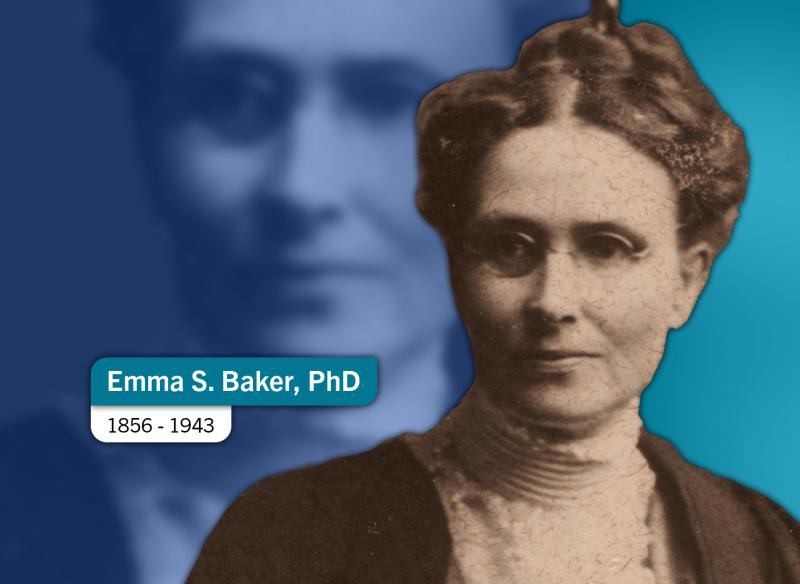April 22, 2025 | Alumni
Meet Emma Sophia Baker: One of the first two women to earn a PhD in Canada
By Michael Pereira

University of Toronto alumna Emma Sophia Baker was one of the first two women to earn a PhD in Canada.
It’s unlikely that Emma Sophia Baker set out to make history, yet she broke new ground in psychology, the sciences and higher education in Canada.
In 1903, Baker became one of the first two women to earn a PhD from a Canadian university when she was awarded a doctorate from the University of Toronto – the other being chemist Clara Benson. It was just the eighth PhD awarded by the university.
Baker studied colour aesthetics and perception at U of T, conducting unique studies that overturned the once-popular belief that people prefer colour combinations involving complementary colours.
Born in Milton, Ontario in 1856, Baker was a strong proponent in the promotion of women’s education. After receiving her preparatory education at Newmarket High School, and attending the Toronto Normal School and Albert College in Belleville, she taught and served as principal at a series of high schools for girls in Ontario and Pennsylvania. She travelled to Europe in the 1890s to spend a year at the Sorbonne in Paris, becoming fluent in French, and another at Newnham College in Cambridge.
Enrolling at U of T
Soon after returning to Canada in her early 40s, Baker joined the Victoria College Class of 1899, concentrating on experimental psychology (which was then housed under the Department of Philosophy). She earned her BA in Philosophy while acting as president of her class and vice-president of the Philosophy Society.
She continued her studies at U of T under the supervision of Professor August Kirschmann, a world-renowned scholar of colour perception who led the psychology laboratory. Baker designed and conducted experiments on the aesthetics of colours, publishing the results of two studies in the laboratory’s in-house publication, University of Toronto Studies, Psychological Series.
A colourful doctoral dissertation
“Experiments on the aesthetic of light and colour: On combinations of two colours” determined that observers actually preferred combinations of similar colours, and not complementary colours like had previously been thought. To reach that result, she made 276 colour combinations using 24 different colours (where each of the 24 were paired with each of the other 23) and asked observers to pick those they found most pleasant.
“Experiments on the aesthetic of light and colour: Spectrally pure colours in binary combinations,” built on her previous work, finding that observers prefer combinations of colours in the same range. “There is very little justification for the old dictum of the maximum pleasantness of pairs of complementaries,” Baker writes.
These two studies served as part of her doctoral dissertation.
From 1901 to 1914, Baker lived in Sackville, New Brunswick and worked at the Ladies’ College at Mount Allison University—first as lady principal before being promoted to vice-principal, the chief female administrative officer. In 1914, she accepted a professorship in psychology, ethics and economics at the Maryland College for Women in Lutherville, Maryland.
She remained in Maryland until she retired at 75. She then returned to Toronto, where she lived to the age of 88.

